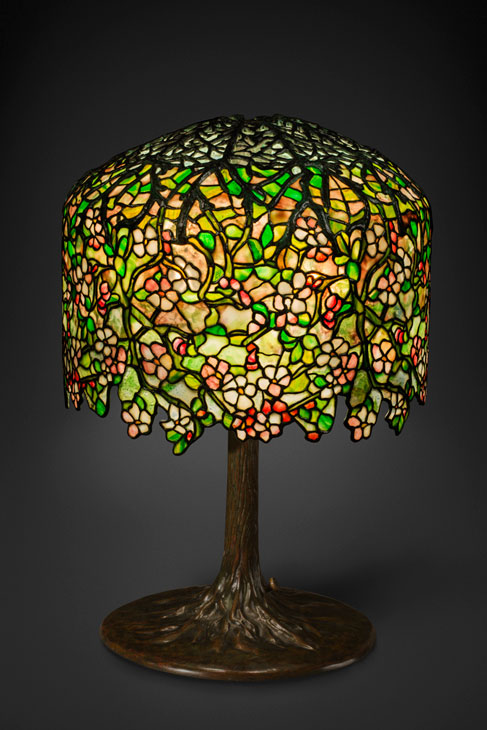The New-York Historical Society Museum and Library is far more than its name implies. It is dedicated – commendably and optimistically – to revealing ‘the dynamism of history and its influence on the world of today’. In other words, to making history matter. And, thanks to a floor-full of new galleries, it can now do this much better than before.
Founded in 1804, the Society is the city’s oldest museum and sits in quiet majesty overlooking Central Park. Its 1.6 million or so treasures include a world class collection of Hudson River School paintings; all 435 extant preparatory watercolours by John James Audubon for his Birds of America; the Patricia D. Klingenstein research library (one of the country’s more distinguished); the Gilder Lehrman collection of 60,000 or so items documenting four centuries of American history; remarkable examples of American silver; some 800 sculptures spanning the colonial period to today; and, among much, much more, one of the finest and broadest collections of Tiffany glass.

Rendering of the mezzanine of the Tiffany Gallery, Fourth Floor, New-York Historical Society. Courtesy Eva Jiřičná Architects
Until recently, little of this could be displayed. As Margaret K. Hofer, the Society’s vice president and museum director, explains: ‘We did not have permanent galleries. We had to use small exhibition spaces to maximum efficiency so we usually stuck to one medium, such as chairs or ceramics. Thematic displays were difficult.’ Yet, she says visitors to this building are different from those who rush to an art museum to see a temporary show and often ignore the permanent galleries. ‘Our visitors want to dig deeper rather than browse.’
The solution has been to clear out the double-height fourth floor and start over. It used to house the Henry Luce III Center for the Study of American Culture, providing open storage for as much of the collection as could be crammed in. ‘It had a good portion of the collection’, says Hofer, ‘but little interpretation.’ Now the center, which still carries the name of the supporting Luce Foundation, is devoted to selective displays recounting the story of America through the lens of New York; a Center for Women’s History; and a double-height Tiffany gallery which addresses some misconceptions. ‘There is a tendency to think of Tiffany’s designs as moving from simple to complex, but thanks to our collection of letters written by Clara Driscoll, one of the Tiffany Girls, we know that many complex pieces were in fact early, and Tiffany’s business managers later urged the simpler designs so multiples could be made more quickly.’

Apple Blossom table lamp (c. 1901–06), Tiffany Studios; probably designed by Clara Driscoll. New-York Historical Society
To give an overview of America’s history, with depth, and to show off the full range of the collection is not easy. Fortunately, the ‘permanent’ gallery displays can be changed. For now, the opening installation is splendid. It has three types of display: wide niches containing focused themes; soaring vertical cases crammed with objects to give an idea of plenty; and, down the central corridor, a string of 10 powerful overview pieces, kicking off with a globe made in 1542 – the first to indicate the exploration of the New York area by Giovanni da Verrazzano – and ending with a door graffitied by more than 80 artists active in New York in the 1970s. ‘This is unexpected, sitting among the early pieces’, says Hofer. Yet it documents a specific period in the city’s history. ‘New York was going through hard times. This was a flowering.’
One niche display is devoted to Hudson River artist Asher B. Durand’s paints, palettes and brushes, and a recreation of his studio. ‘It explains process, how an artist goes out to sketch ‘en plein air’, then comes back to the studio to make an oil painting. And how the invention of collapsible paint tubes made this easy, compared to having to grind paints’, says Hofer. Another area explains how the cabinet-maker Duncan Phyfe used his tools. ‘We show all his tools from his tool chest, and a video on how they are used to make a chair. And we have a Phyfe chair beside the niche’, says Hofer with satisfaction.
Within this new destination space, Margaret Hofer’s favourite item is a hand-painted silk banner that was paraded through the city in 1788 by the Society of Pewterers, alongside all the other guilds with their own banners and floats, to mark the ratification of the American constitution. ‘It is the only banner to survive from this. It has images of a 13-star American flag and a pewterer’s workshop, very rare. It came to us through family descent, and [was] given in 1903.’
Amid these stimulating stories, it would be easy to miss two special treats now on view. When the Four Seasons restaurant, legendary haunt of Manhattan power brokers, closed in July 2016, the Society acquired one of its Mies van der Rohe ‘Brno’ chairs designed in 1929–30 with Lilly Reich. As Hofer observes: ‘It shows how objects are incorporated into statements of power.’ Before that the museum was given, from the same building, Picasso’s theatre curtain made for Le Tricorne (1919), which Diaghilev’s Paris-based Ballets Russes premiered on 22 July, 1919, at the Alhambra Theatre in London’s Leicester Square. So excited was the Society by this gift that it made a delightful video about its arrival and installation. Now, that is ‘the dynamism of history’.
The New-York Historical Society’s renovated fourth floor will reopen to the public on 29 April.
















![Masterpiece [Re]discovery 2022. Photo: Ben Fisher Photography, courtesy of Masterpiece London](http://zephr.apollo-magazine.com/wp-content/uploads/2022/07/MPL2022_4263.jpg)
‘Like landscape, his objects seem to breathe’: Gordon Baldwin (1932–2025)